Hollywood Novels
Hollywood provides the perfect setting for fiction that wants to get at the heart of America. It is the uneasy (but often glorious) collision of art vs. commerce, of simulation vs. reality. A place where the ambitious run into other members of their species, and are often undone by same. A place with no natives. Best of all, it’s a place that doesn’t really exist but is instantly recognizable to a reader. Yes, there is a part of Los Angeles called Hollywood, but the Hollywood of our imagination is so much more. It is the locus of the motion picture industry. Home to stars and producers and writers. A glamorous place. A place that is quintessentially American—where strivers and connivers can reinvent themselves and where there is always the possibility of being discovered. For better or worse, it has helped to define our country to ourselves and to the world. It is easy to see why writers have taken it up as a subject so frequently. To give an idea of just how frequently, the subtitle of Anthony Slide’s bibliography, The Hollywood Novel, impressively notes the inclusion of “over 1200 works with film-related themes or characters” from 1912 to 1994.
In this Book Recommendations post, Library staffers highlight a handful of their favorite Hollywood novels in our stacks. The Library has been buying Hollywood fiction for decades, and the earliest that we know to be in our collection are Harry Leon Wilson’s Merton of the Movies (1922) and Jim Tully’s Jarnegan (1926). The most recent is Kate Alcott’s A Touch of Stardust, which arrived a few weeks ago. Three subject searches to start your online catalog browsing include Motion picture actors and actresses—California—Los Angeles—Fiction, Hollywood (Los Angeles, Calif.)—Fiction, and Screenwriters—California—Los Angeles—Fiction, but keep in mind that older works of fiction do not often have thorough subject headings.
Patrick Rayner, Acquisitions Assistant/Circulation Assistant
I grew up in Los Angeles and loved everything about the movies. I loved the whole sordid business, and without any irony. It took a long time to dawn on me that the carefully constructed appearance of the movie-making machine might be hiding seedier stories. My introduction to the Hollywood novel, and to some of the realities of the business, came by way of another Angeleno. We often traded books we liked when we saw each other. Her dad wrote for television, and gave her a copy of What Makes Sammy Run? by Budd Schulberg. She raced through it and passed it on to me. In her dad’s opinion, it was the truest thing ever written about Hollywood. This is a frightening thought. Schulberg was the son of Hollywood producer, B. P. Schulberg, an early Hollywood mogul who was outwitted and ruined by other ambitious men who moved out to California to make it in show biz. What Makes Sammy Run? is based on his father’s life, and details the rise of Sammy Glick, whose penchant for backstabbing quickly takes him up the studio totem pole. It also chronicles the movie machine’s terrible treatment of the talent—making sure the creatives stay poor and hungry and desperate for the next bit of work the studio might proffer them. Published in 1941, it still feels current. Schulberg peppers it with sharp dialogue and sharper insights, skills he would bring to his scripts for movies like On the Waterfront and A Face in the Crowd. He also wrote another Hollywood novel, featuring a thinly disguised Scott Fitzgerald, called The Disenchanted. If anything, it is more desperate than its predecessor.
Only later did I realize that Schulberg’s book was considered a highpoint of its kind. I didn’t even know there was “a kind.” Further investigation led me to the book largely considered the apex of Hollywood 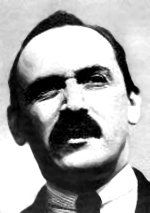 novels, Nathaniel West’s The Day of the Locust. Like Schulberg, West knew of what he wrote. He had already published Miss Lonelyhearts and two other novels, but he couldn’t make ends meet. When 20th Century Fox bought the rights to Miss Lonelyhearts, he followed the book to Hollywood. He never worked on the script for it, but managed to snag several studio assignments writing B-grade movies. In between these jobs, he completed The Day of the Locust. The novel revolves around Tod Hackett, a man who wants to be a serious painter, but moves to Hollywood to make money painting background scenery. He falls for an aspiring actress whose vaudevillian father has been left behind by the new entertainments. Everyone in the novel is desperate to find their way in this town of shifting surfaces, but no one manages to plant their feet. The novel is upsetting and cynical and incredible—a classic deserving of the title.
novels, Nathaniel West’s The Day of the Locust. Like Schulberg, West knew of what he wrote. He had already published Miss Lonelyhearts and two other novels, but he couldn’t make ends meet. When 20th Century Fox bought the rights to Miss Lonelyhearts, he followed the book to Hollywood. He never worked on the script for it, but managed to snag several studio assignments writing B-grade movies. In between these jobs, he completed The Day of the Locust. The novel revolves around Tod Hackett, a man who wants to be a serious painter, but moves to Hollywood to make money painting background scenery. He falls for an aspiring actress whose vaudevillian father has been left behind by the new entertainments. Everyone in the novel is desperate to find their way in this town of shifting surfaces, but no one manages to plant their feet. The novel is upsetting and cynical and incredible—a classic deserving of the title.
Less well known than these previous books is a terrific short novel called A Way of Life, Like Any Other, by Darcy O’Brien, first recommended to me by a Library member. Published in 1977, O’Brien wrote a coming of age tale set in the ripple effect of Hollywood lives in the 1950s. No one was better suited to write it. O’Brien’s parents were the film stars George O’Brien (star of F.W. Murnau's Sunrise) and Marguerite Churchill. By all accounts, it is a fictionalized memoir of O’Brien’s younger years. As the novel opens, the hero’s parents are still married. The father’s career survives the transition to talkies; the mother’s starts to fade. Everything still glitters and the champagne never stops flowing. As their fates diverge, they separate and everything upends. The mother, vain and selfish, drinks too much and ignores her son. The father, whose star finally begins to fade, takes over his son’s care with no better results. The parents could have stepped out of Nathaniel West’s Hollywood, but this is a novel about the disasters that occurred when that Hollywood faded. It’s not nearly as cynical, though, and O’Brien finds compassion and tragedy in these ridiculous lives. O’Brien is a talented writer. He writes with necessary reserve, allowing the
comedy and tragedy to slowly appear amidst the mess of these lives. The pleasures of this novel are mostly in its narration, with several darkly funny moments. Luckily, the New York Review of Books thought it good enough to return to print with a new edition introduced by Seamus Heaney. O’Brien is a worthy companion of Schulberg and West, a chronicler of the remaindered ends of the 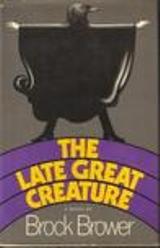 people who they wrote about.
people who they wrote about.
A recent addition to our collection, though not recently published, is the The Late Great Creature by Brock Brower. This novel, published in 1971, deserves its own rediscovery. Unlike the prior novels I mentioned, this novel is set after the golden age of Hollywood—in the California Joan Didion defined in Play It as It Lays. Warner Williams is a journalist, paid by Esquire to write a piece about the aging horror movie actor Simon Moro. Moro, a Peter Lorre type, is about to star in yet another low budget shocker, but he brings a seriousness of purpose to the task. He’s sick of the pablum being offered as horror and manages to find actual ways to terrify people. The novel spans the making of the movie and its subsequent publicity tour. It is firmly rooted in its moment of history. Brower uses bits of New Journalism and the counterculture to give it its specific feel. It feels like a literary equivalent of Altamont—the revolution is on, but it won’t turn out the way people want it to. Brower’s satire of the movie industry is unlike anything else I’ve read.
Brynn White, Bibliographic Assistant/Digital Projects Assistant Emeritus
Within the first three decades of the twentieth century, Hollywood had grown into an empire. Nothing, it seems, could hinder its ascension. Naturally, the Great Depression and the emergence of sound resulted in the expulsion of many subjects, but there was no shortage of reinforcements. Gaggles of theater performers and established writers were recruited to try their hand at the talkies. They rivalled the thousands of hopefuls—incited by fan magazine fictions to catch a bus west—littering the purgatorial lobbies of the Hollywood Hotel and Central Casting waiting To Be Discovered.
Such conditions produced a rich cast of characters—desperately grasping for success, or hanging on to it for dear life—in a kingdom so swiftly formulated it bypassed the formulation of an ethical code or rules. With the mass populace experiencing the Hollywood narrative through the gauzy filter of publicists and the onscreen fairy tales themselves, it was up to novelists to pull back the curtain. And if the output from and about the era is any indication, a milieu of decadence, depravity, and despair penetrated the California sunshine and Tinseltown glitz.
In I Should Have Stayed Home (1938), the equally existential follow-up to They Shoot Horses, Don’t They?, pulp writer Horace McCoy captures the daily reality of this beautiful and ugly place “where morality 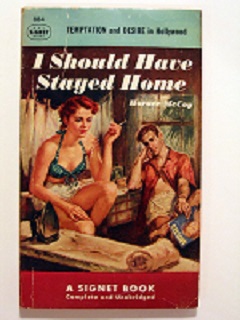 never crosses the city limits”:
never crosses the city limits”:
"Feeling the way I did, alone and friendless, with the future very black, I did not want to get out on the streets and see what the sun had to show me, a cheap town filled with cheap stores and cheap people, like the town I had left, identically like any one of ten thousand other small towns in the country–not my Hollywood, not the Hollywood you read about. This is what I was afraid of now, I did not want to take a chance on seeing anything that might have made me wish I had stayed home, and this is why I had waited for the darkness, for the night-time. That is when Hollywood is really glamorous and mysterious and you are glad you are here, where miracles are happening all around you, where today you are broke and unknown and tomorrow you will be rich and famous."
Possibility is the threat and the promise that beguiles McCoy’s handsome and hapless narrator in I Should Have Stayed Home, who has been reduced to grueling and sparse extra work when his Geoy-jaaah (read: Southern) accent derails his screen test but fails to temper his hope for a big break, much less a returned phone call. He encounters several archetypes of the Hollywood novel in all their perverse and hypocritical glory: socialites basking in glamour by association, erratic showboats disguising mediocrity as eccentric genius, benefactors with false promises and nefarious intentions, and the chewed-up and-spit-out young women reduced to petty larceny and more tragic means of self-destruction.
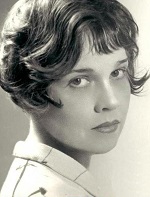 The chump narrator serves comedic aims in Anita Loos’s No Mother to Guide Her (1961). Originally serialized in Cosmpolitian as "The Better Things in Life" in 1930, and later revised by Loos, the protagonist is a screen queen enduring the scandal of her leaked diaries under the dutiful protection of a simpleton who worships at the cinematic altar of her purity and perfection. Loos specialized in the distillation of harshly hilarious truths from the semiliterate voices and follies of naïve rubes, egomaniacal charlatans, sexless sex symbols, and gluttons for ballyhoo (Hollywood in a nutshell?). Having begun penning scenarios for D.W. Griffith when she was still in pigtails and Los Angeles was still a pioneer town, Loos maintained an insouciant attitude towards the growing motion picture industry and its fools for fame and fortune. Edmund Wilson praised the serialized version of No Mother as the "novel about Hollywood with most teeth in it" ("The Boys in the Back Room," Classics and Commercials), but it is A Mouse is Born (1951)—described as “the Kinsey Report for the swimming pool set”—that may be the great unsung Hollywood farce, delivering the epistolary reflections of a bed-ridden bombshell to her gestating child.
The chump narrator serves comedic aims in Anita Loos’s No Mother to Guide Her (1961). Originally serialized in Cosmpolitian as "The Better Things in Life" in 1930, and later revised by Loos, the protagonist is a screen queen enduring the scandal of her leaked diaries under the dutiful protection of a simpleton who worships at the cinematic altar of her purity and perfection. Loos specialized in the distillation of harshly hilarious truths from the semiliterate voices and follies of naïve rubes, egomaniacal charlatans, sexless sex symbols, and gluttons for ballyhoo (Hollywood in a nutshell?). Having begun penning scenarios for D.W. Griffith when she was still in pigtails and Los Angeles was still a pioneer town, Loos maintained an insouciant attitude towards the growing motion picture industry and its fools for fame and fortune. Edmund Wilson praised the serialized version of No Mother as the "novel about Hollywood with most teeth in it" ("The Boys in the Back Room," Classics and Commercials), but it is A Mouse is Born (1951)—described as “the Kinsey Report for the swimming pool set”—that may be the great unsung Hollywood farce, delivering the epistolary reflections of a bed-ridden bombshell to her gestating child.
While Loos was the effortless and ambivalent insider, F. Scott Fitzgerald proved the wistful outsider looking in, enraptured by the unique allure of making it in the movies, the populist medium of "more glittering, grosser power.” Having already penned the ultimate deconstruction of the American Dream, he saw “the history of all aspiration” in Hollywood. He acutely felt it himself; as one comrade noted, Fitzgerald would have rather written a movie than the Bible. But the fallen novelist had little knack for the architectural delicacies of the screenplay, nor the cadences of successful onscreen dialogue (his drunken resignation was painfully depicted by collaborator Budd Schulberg in The Disenchanted). However, Fitzgerald’s crystalline vision in the face of crippling self-consciousness produced the charming and compact Pat Hobby Stories, about a ne’er-do-well screenwriter who summons his only available inspiration for blackmail, money pandering, and stealing other people’s ideas.
An empire requires a higher authority, and in 1930s Hollywood it was the boy wonder head of production at MGM, Irving Thalberg, whom Fitzgerald fictionalizes as protagonist Monroe Stahr in The Last Tycoon. Thalberg succumbed to the all-consuming burden of compartmentalizing the nation’s hopes and dreams into 90-minute phantasmagorias, dying in 1936 at the age of 37. Fitzgerald himself failed to make it out of Hollywood alive only four years later, but left behind 60,000 extraordinary, vibrant words and enough detailed notes to piece together this posthumously-published vision of Hollywood as life and love in America.
Larry McMurtry took cues from Fitzgerald’s Tender Is the Night, constructing Somebody’s Darling out of three distinct perspectives: an aging screenwriter escaping genre weariness through the cheap thrills of womanizing, an arrogant Texan former football star with something nebulous to prove as a producer, and the honesty-privileging woman they both love, who has found directorial success after years rising in the ranks but is not sure she wants or deserves it. Although set in the 1970s, McMurty’s book asserts that old problems never die. One character comments, “Hollywood oughtn’t to try and propagate itself. It ought to die out at the end of every generation. Experience never gets passed on here anyway.” Hopes, delusions, dirty tricks, denigrations, and self-doubt will continue to engender the Hollywood rat race in a never-ending psychic loop, unfortunate for its victims but rewarding for its readers.
Steven McGuirl, Head of Acquisitions
Gavin Lambert’s The Slide Area: Scenes of Hollywood Life (1959) is a series of short stories (or “scenes”) narrated by a British screenwriter living in Los Angeles. The “slide area” of the title refers to the outer reaches of the city, where cliffs are “restless and sliding” into the ocean below. In a tone cool and terse, yet compassionate and never patronizing, the unnamed narrator provides portraits of several individuals he meets there who can also be described as “restless and sliding,” drifting on the unkind fringes of Hollywood. These are people “too near the edge” in more ways than geographically. Lambert is remarkably adept at using description of landscape and architecture to convey a sense of the rootlessness, the loneliness, the lost feeling that characterizes the people who populate his book. Even Los Angeles clichés such as near-constant driving and schizophrenic architecture are effective tools in Lambert’s hands. Cumulatively, the seven stories cast quite a melancholic spell and a few characters are unforgettable.
the outer reaches of the city, where cliffs are “restless and sliding” into the ocean below. In a tone cool and terse, yet compassionate and never patronizing, the unnamed narrator provides portraits of several individuals he meets there who can also be described as “restless and sliding,” drifting on the unkind fringes of Hollywood. These are people “too near the edge” in more ways than geographically. Lambert is remarkably adept at using description of landscape and architecture to convey a sense of the rootlessness, the loneliness, the lost feeling that characterizes the people who populate his book. Even Los Angeles clichés such as near-constant driving and schizophrenic architecture are effective tools in Lambert’s hands. Cumulatively, the seven stories cast quite a melancholic spell and a few characters are unforgettable.
The Slide Area was published to wide critical acclaim in 1959: “brilliant...and beautifully made…earns a place along with Scott Fitzgerald’s The Last Tycoon and Nathanael West’s Day of the Locust” (TLS). Lambert wrote more fiction, including another Hollywood novel, Inside Daisy Clover (1963), that he adapted into a screenplay, as well as biographies and a memoir, Mainly About Lindsay Anderson. His screenplays for Sons and Lovers (1960) and I Never Promised You a Rose Garden (1977) were nominated for Oscars. He died in 2005.
Since the 1960s, Don Carpenter’s name has often been paired with that flattering curse, “writer’s writer,” all but guaranteeing him a small, loyal cult following. Predictably, his visibility has only risen since his death by suicide in 1995. A few years ago, New York Review Books reissued his first novel Hard Rain Falling (1965), and his last novel, Fridays at Enrico’s, was published posthumously in 2014 (“finished by Jonathan Lethem”) to wide acclaim.
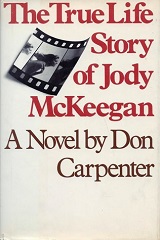 Carpenter’s three Hollywood novels—A Couple of Comedians (1979); The True Life Story of Jody McKeegan (1975); Turnaround (1981)—were also recently republished as The Hollywood Trilogy (Counterpoint Press) after being long out of print. All have their strengths, but I consider The True Life Story of Jody McKeegan to be the best. The titular character is a barely-aspiring actress who has been kicking around the outer margins of Hollywood for years, and finally catches a break when cast in a B picture. As in Hard Rain Falling, Carpenter is at his best in the beginning of the novel, describing the shattered lives and hardscrabble environment of McKeegan’s Portland youth that have shaped her. His prose is direct and economical, the pace is satisfying, and McKeegan emerges as a compelling character, drifting towards redemption. This being ‘70s Hollywood, the trilogy is rife with sex and drugs, along with sordid behind-the-scenes hustles and unsavory people. If you like early 70s “new Hollywood” films, you will likely enjoy Carpenter’s smart, cynical take on the movie industry.
Carpenter’s three Hollywood novels—A Couple of Comedians (1979); The True Life Story of Jody McKeegan (1975); Turnaround (1981)—were also recently republished as The Hollywood Trilogy (Counterpoint Press) after being long out of print. All have their strengths, but I consider The True Life Story of Jody McKeegan to be the best. The titular character is a barely-aspiring actress who has been kicking around the outer margins of Hollywood for years, and finally catches a break when cast in a B picture. As in Hard Rain Falling, Carpenter is at his best in the beginning of the novel, describing the shattered lives and hardscrabble environment of McKeegan’s Portland youth that have shaped her. His prose is direct and economical, the pace is satisfying, and McKeegan emerges as a compelling character, drifting towards redemption. This being ‘70s Hollywood, the trilogy is rife with sex and drugs, along with sordid behind-the-scenes hustles and unsavory people. If you like early 70s “new Hollywood” films, you will likely enjoy Carpenter’s smart, cynical take on the movie industry.
Carpenter did hard time in Hollywood and left with one screenwriting credit, a tough, nearly-forgotten road film about a self-destructive third-tier country singer called Payday (1973), starring an exceptionally unhinged Rip Torn. If you are a fan of gritty 1970s cinema or character studies of the charismatically doomed, it is recommended.
Speaking of sex and drugs, Norman Mailer’s The Deer Park (1955) generated quite a bit of controversy in its day due to Mailer’s direct approach to said subjects. Mailer had a hard time even getting the book published, so frightened were editors and lawyers by potential obscenity charges. (The publishing and editing process is described by Mailer in Advertisements for Myself.) The Deer Park takes place in a town called Desert D’Or, modelled on Palm Springs, where Hollywood players and those in their chaotic orbit go when they are not working in “the capitol” (Hollywood). The narrator is Sergius O’Shaugnessy, Korean War Air Force hero—handsome and likable, drifting into town with $14,000 in gambling winnings and no plans but to try to forget the war and maybe start a writing career. He winds up mixing with a messy crew of Hollywood actors, a blacklisted director, a pimp, producers, a deranged studio head, and various hangers-on.
The Deer Park was published to very mixed reviews in 1955, including a real hatchet job in the NY Times. True, its few likeable or admirable characters can occasionally make for tough reading, and Mailer’s windy explorations of romantic relationships requires heroic patience at times. However, it does have some fine moments and Mailer’s skewering of a few characters is entertaining and cutting; his skill with dialogue is the book's main strength. Film historian and critic David Thomson wrote in an admiring 2014 New Republic piece that “The Deer Park is probably the best novel ever written about the movie business.” High praise indeed considering its company.
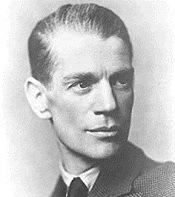 Sara Holliday, Events Coordinator / Head Librarian's Assistant
Sara Holliday, Events Coordinator / Head Librarian's Assistant
In Christopher Bram's Father of Frankenstein, neurological problems slowly take apart James Whale, invading his old age with sights, sounds, even smells, from his past, when he directed classic films such as the 1931 Frankenstein. His attempts to cling to the present captures elegant, decadent late-1950s Hollywood and its generation of elder giants such as George Cukor. Bram’s spare, evocative writing is full of compassion for both the aging artist and the unimaginative young man he tries to recreate. This novel is the source of the 1998 film Gods & Monsters.
Further Reading
Joan Didion | Play it as it Lays
Theodor Roszak | Flicker
Bruce Wagner | Force Majeure & I’m Losing You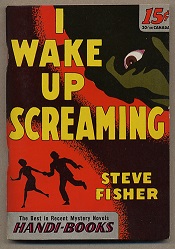
Armistead Maupin | Maybe the Moon
Steve Fisher | I Wake Up Screaming
Budd Schulberg | The Disenchanted
Budd Schulberg | Moving Pictures: Memories of a Hollywood Prince
Alfred Hayes | My Face for the World to See
Daniel Fuchs | The Golden West: Hollywood Stories (introduction by John Updike)
Chipp Rhodes | "Hollywood Fictions," The Cambridge Companion to the Literature of Los Angeles
Edmund Wilson | "The Boys in the Back Room," Classics and Commercials
Woody Haut | Heartbreak & Vine: the fate of hardboiled writers in Hollywood
Tom Dardis | Some Time in the Sun ("the Hollywood Years of Fitzgerald, Faulkner, Nathanael West, Aldous Huxley, and James Agee")

